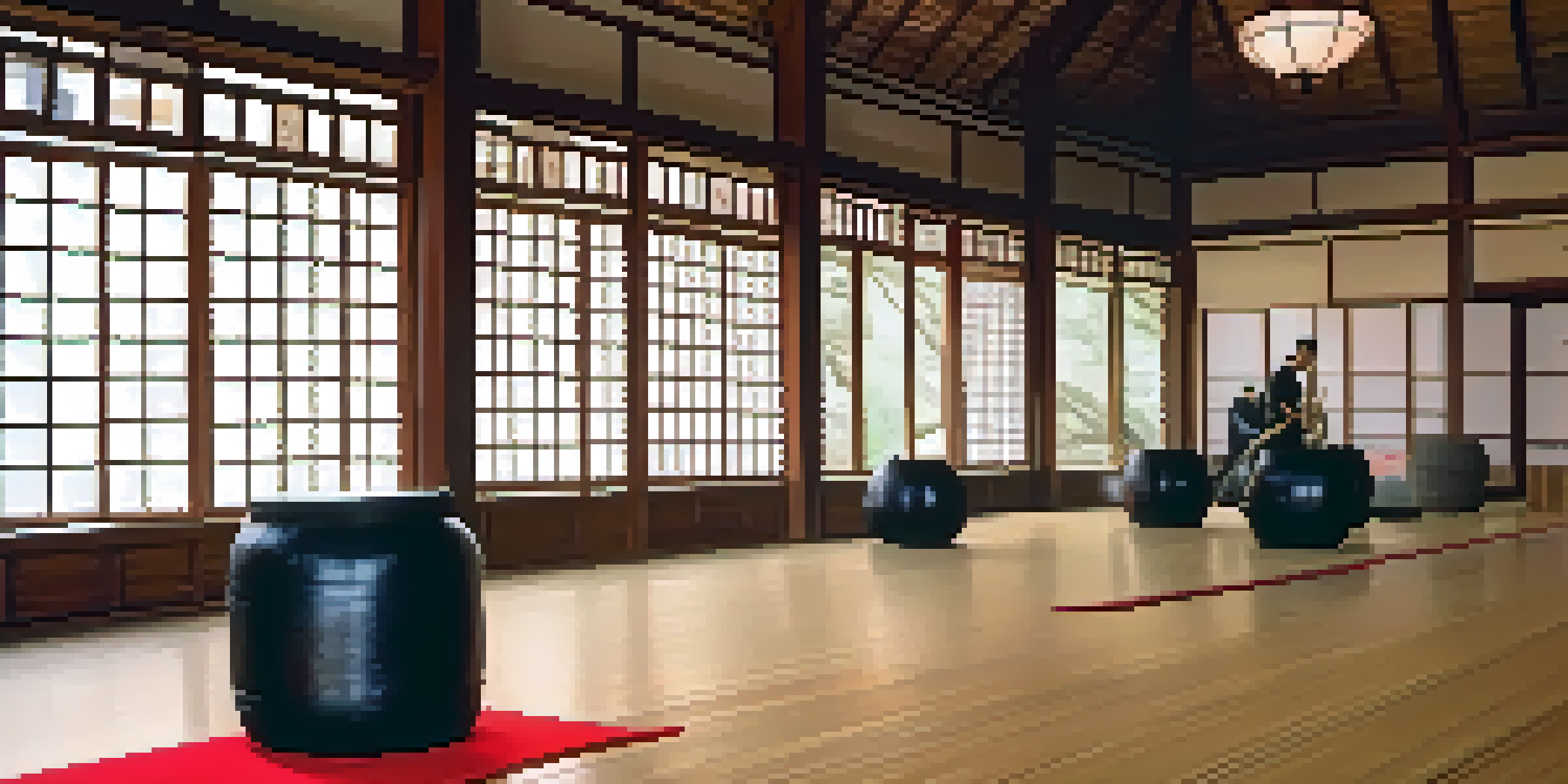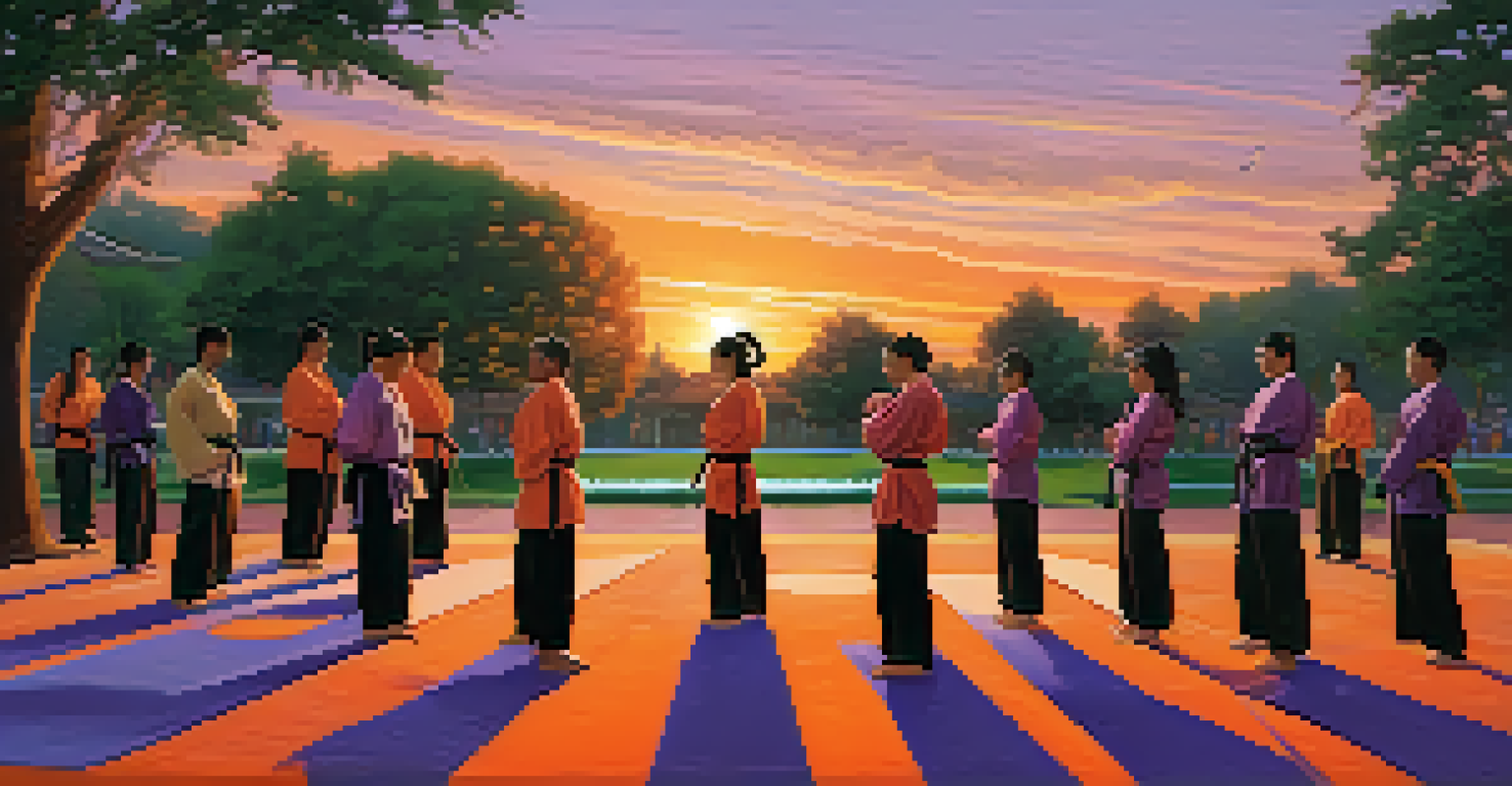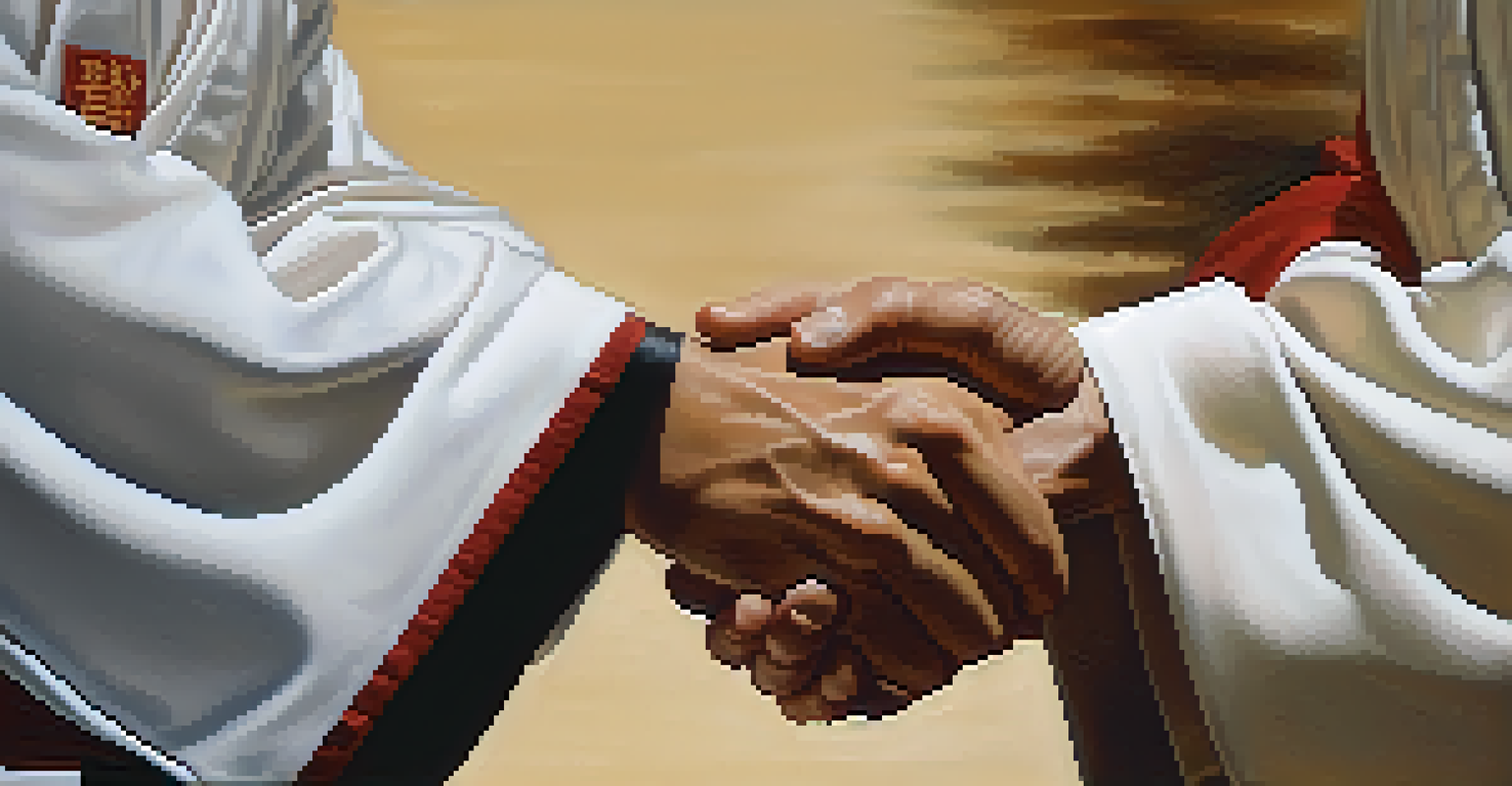Understanding the Role of Martial Arts in Conflict Resolution

Martial Arts: More Than Just Physical Combat Skills
Many people view martial arts solely as a means to learn self-defense or engage in combat. However, at its core, martial arts encompasses a rich philosophy that emphasizes discipline, respect, and self-awareness. This holistic approach fosters personal growth, making practitioners more adept at navigating conflicts both in and out of the dojo.
The greatest victory is that which requires no battle.
Practitioners learn to control their emotions and reactions, which is essential in conflict situations. By understanding their own triggers, they can respond thoughtfully rather than react impulsively. This level of self-control is invaluable, as it often diffuses potential conflicts before they escalate.
Moreover, martial arts emphasizes the importance of dialogue and understanding. Through training, students practice not just physical techniques but also the art of communication, which is crucial when resolving disputes. This blend of physical and mental training lays the groundwork for effective conflict resolution.
Building Discipline and Respect Through Training
Discipline is a cornerstone of martial arts training, teaching individuals the importance of commitment and perseverance. This discipline extends beyond the training mat, encouraging practitioners to approach conflicts with a calm and focused mindset. It’s this mindset that can transform a heated argument into a constructive conversation.

Respect for oneself and others is another vital lesson imparted through martial arts. Students learn to honor their trainers, peers, and even opponents. This culture of respect translates well into everyday interactions, making individuals more empathetic and understanding when faced with conflicts.
Martial Arts Cultivates Emotional Intelligence
Practicing martial arts helps individuals understand and manage their own emotions and those of others, enhancing conflict resolution skills.
By cultivating discipline and respect, martial artists are better equipped to handle disagreements. They approach situations with a sense of responsibility, often seeking to understand the other person's viewpoint rather than merely defending their own. This approach can lead to more meaningful resolutions.
Developing Emotional Intelligence Through Practice
Emotional intelligence, or the ability to recognize and manage one’s emotions and those of others, is crucial in conflict resolution. Martial arts training involves a deep understanding of emotions, as practitioners often face fear, frustration, and even anger during sparring sessions. Learning to navigate these feelings builds emotional resilience.
To be able to talk with others is a great skill, but to listen is an even greater one.
By engaging in controlled confrontations, martial artists develop a keen sense of empathy. They learn to read body language and emotional cues during practice, fostering an environment where understanding becomes second nature. This skill is invaluable when it comes to resolving conflicts, as it allows individuals to connect on a deeper level.
The ability to manage emotions also helps prevent conflicts from escalating. When faced with a disagreement, a person with high emotional intelligence can deescalate tension and create a space for open dialogue. This not only resolves the current issue but also strengthens relationships in the long run.
Conflict Resolution Techniques from Martial Arts
Martial arts are replete with techniques that can be metaphorically applied to conflict resolution. For instance, the concept of 'flow' in martial arts—moving with the opponent's energy instead of resisting it—can be a powerful strategy in conflict situations. By adapting to the other person's emotions or arguments, one can find common ground and work towards a resolution.
Another technique is the idea of 'balance.' Just as martial artists strive for balance in their movements, individuals can seek balance in their interactions. This means valuing both one's own needs and those of the other party involved in the conflict, leading to solutions that are equitable and fair.
Discipline and Respect Foster Growth
The principles of discipline and respect learned in martial arts enable practitioners to approach conflicts with responsibility and empathy.
Lastly, practitioners often learn to use leverage to their advantage. In the context of conflict resolution, this translates to understanding the strengths and weaknesses of both sides, allowing for creative solutions that can satisfy both parties. These techniques can transform the way we approach disputes in everyday life.
The Role of Mindfulness in Martial Arts and Conflict Resolution
Mindfulness, or the practice of being fully present in the moment, is integral to martial arts training. This heightened awareness helps practitioners recognize their thoughts and feelings, enabling them to respond rather than react to conflicts. Mindfulness allows for a clearer perspective, leading to better decision-making in tense situations.
Through techniques such as meditation and focused breathing, martial artists cultivate a sense of calm that can be invaluable during conflicts. When individuals approach a disagreement with a mindful attitude, they are less likely to become overwhelmed by emotions, making it easier to find common ground.
Additionally, mindfulness encourages active listening, a crucial skill in conflict resolution. By truly hearing what the other person is saying, one can address their concerns more effectively. This not only resolves the immediate conflict but also builds trust and respect, paving the way for healthier interactions in the future.
The Community Aspect of Martial Arts in Resolving Conflicts
Martial arts often foster a strong sense of community among practitioners. This supportive environment encourages collaboration and understanding, teaching individuals to listen and engage with diverse perspectives. In times of conflict, having a community to turn to can provide guidance and support.
Within martial arts schools, students often share their experiences and challenges, including conflicts they face in their daily lives. This open dialogue fosters problem-solving skills and encourages a collective approach to resolving issues. By learning from each other's experiences, practitioners are better prepared to handle their own conflicts.
Community Support Enhances Resolution
Being part of a martial arts community provides a supportive environment that encourages collaborative problem-solving during conflicts.
Moreover, the sense of belonging that comes with being part of a martial arts community can reduce feelings of isolation. When individuals feel supported, they are more likely to approach conflicts with a positive mindset, viewing them as opportunities for growth rather than obstacles to be avoided.
Real-Life Examples of Martial Arts in Conflict Resolution
There are numerous instances where martial arts have played a pivotal role in resolving conflicts. For example, many schools have integrated martial arts programs to teach students conflict resolution skills—using techniques learned in class to handle disputes with peers effectively. This proactive approach empowers young individuals to manage conflicts before they escalate into more serious issues.
Additionally, there are organizations that use martial arts as a means of mediating community conflicts. By bringing together opposing sides in a shared training environment, these organizations promote understanding and cooperation. The physical activity involved in martial arts can also help to release built-up tension, making it easier for parties to engage in constructive dialogue.

These real-life applications highlight the versatility of martial arts as a tool for conflict resolution. Whether in schools, communities, or even workplaces, the principles learned through martial arts training can lead to more harmonious interactions and a deeper understanding of one another.